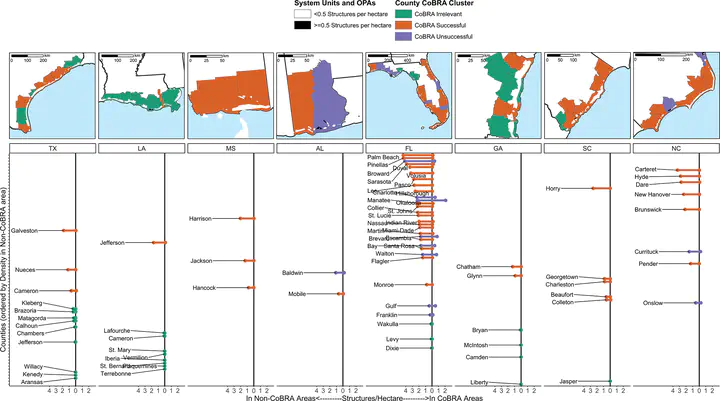Does removal of federal subsidies discourage development? An evaluation of the US Coastal Barrier Resources Act

Abstract
Urban development relies on many factors to remain viable, including federal assistance with infrastructure development. The 1982 US Coastal Barrier Resources Act (CoBRA) prohibits federal financial assistance for infrastructure, post-storm disaster relief, and flood insurance in designated sections (system units) of coastal barriers. How has CoBRA’s removal of these subsidies affected rates and types of urban development? Using building footprint and real estate data (n=1,385,552 parcels), we compare density of built structures, land use types, and land values within and outside of system units in eight southeastern US states. Here we show that CoBRA is associated with reduced development rates in coastal barrier zones, but also reveal how withdrawal of federal subsidies might be counteracted by local responses. As attention increases towards improving development policy in high hazard areas, this work contributes to understanding how limitations on infrastructure subsidies can affect outcomes under overlapping jurisdictions with competing goals.